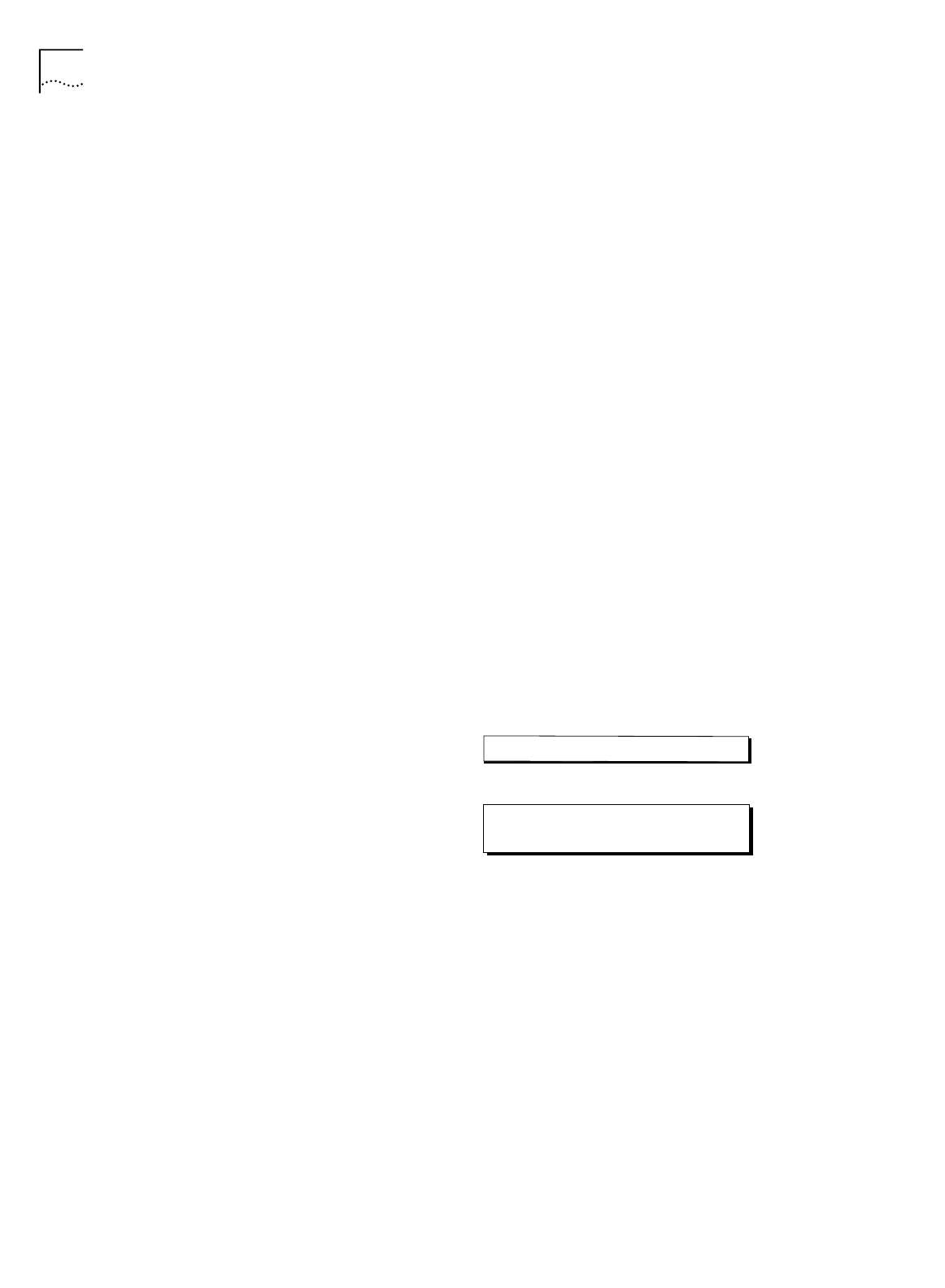User manual
Table Of Contents
- Table of Contents
- About This Guide
- Introduction
- ISDN LAN Modem Functionality Description
- Hardware Description and Installation
- Setting Up TCP/IP for Windows and Macintosh
- Configuring the ISDN LAN Modem
- Advanced Configuration
- Before you Begin
- Setting Up Additional Service Providers
- Editing Service Provider Profiles
- Restricting Workstations from Accessing Service Provider(s)
- Configuring Your LAN Parameters
- Changing Data Call Parameters
- Changing Voice Call Routing
- Reserving DHCP Addresses
- Selective Password Protection
- Changing Your Password
- Setting Up Your ISDN Line Manually
- Locking and Unlocking the Configuration
- Configuring the ISDN LAN Modem from a Remote Location
- Supplementary Voice Call Services
- Placing, Receiving and Disconnecting Calls
- Troubleshooting and Maintenance
- Networking Primer
- What is a network?
- What is a LAN?
- What is a WAN?
- How does a LAN connect to a WAN?
- What is a LAN modem?
- What is ISDN?
- How do different devices communicate with each other?
- What is TCP/IP?
- What is an IP Address?
- What is a Subnet Mask?
- Dynamic and Static IP Addresses
- What is DHCP?
- What is DNS?
- What is NAT?
- What are numbered and unnumbered links?
- How is overall throughput determined?
- What is a network?
- Using the Custom Web Browser
- ISDN LAN Modem Factory Defaults
- ISDN LAN Modem Specifications
- Ordering ISDN Service
- If You Place Your ISDN Order Through 3Com
- If You Place Your ISDN Order Through the Telephone Company
- Supplementary Voice Features Included with U, EZ-ISDN-1, V and EZ-ISDN 1A
- Limitations of ISDN Ordering Codes U, EZ-ISDN 1, V and EZ-ISDN 1A
- What If I Already Have ISDN Service?
- Table of ISDN Ordering Code Capabilities
- Glossary
- Index
- 3Com Corporation Limited Warranty

108 A
PPENDIX
A: N
ETWORKING
P
RIMER
What is an IP Address?
An IP address is a 32 bit address used by TCP/IP to uniquely identify the location of
a device on a network. Note that the IP address does not refer to the device itself.
If, for example, you relocate a PC to another area of the same network, you may
need a new IP address.
The structure of this 32-bit address varies depending upon the size of the network
on which the device is located. From largest to smallest, network types are
referred to as Class A, Class B, Class C, and Class D. Within each class, a certain
number of bits identifies the class, the network and the local address. For
example, in a Class C network, the first three bits (110) identify the network type
as Class C. The next 21 bits identify the network and the last eight represent the
local or host address limiting the number of devices to 256. In contrast, a Class A
network allocates 24 bits for local addresses, allowing for many more devices.
IP addresses are composed of four sets of eight bits usually separated by a period.
The IP address of the ISDN LAN Modem identifies the ISDN LAN Modem itself and
the network it creates when devices are connected to the Ethernet ports.
What is a Subnet Mask?
Many networks are divided further into smaller sub networks. A subnet mask is a
number that identifies the sub network to which your computer is connected. The
subnet mask differentiates the part of the IP address that represents the network
and the part that represents the host.
The bits of the subnet mask are set to 1 if the host should treat the corresponding
bit in the IP address as part of the original network number. These bits in the mask
are set to 0 if the host should treat the bits as part of the device number as shown
in Figure 58.
Figure 58
Subnet Mask
Dynamic and Static IP
Addresses
IP addresses for public networks must be unique and provided by the Network
Information Center (NIC). Because of the increasing popularity of the Internet, the
NIC is running out of permanent IP addresses. It is therefore becoming more
common to use dynamic IP addresses which are assigned temporarily and then
reused, instead of static IP addresses which are permanent. For example, when
you access the Internet, your ISP has a pool of IP addresses it uses to provide
temporary connections to multiple users. Once you disconnect from the Internet,
the IP address you were using is placed back in the pool for use by another user.
If your LAN will not connect to the public Internet, you can set up your own
unique (that is, private) IP address numbering. IP addresses for private networks
such as an office LAN must also be unique but only within that LAN.
IP Address Network Number Device Number
Subnet Mask 11111111 11111111 11111111 00000000
Subnet Address Network Number Subnet Device
Number










